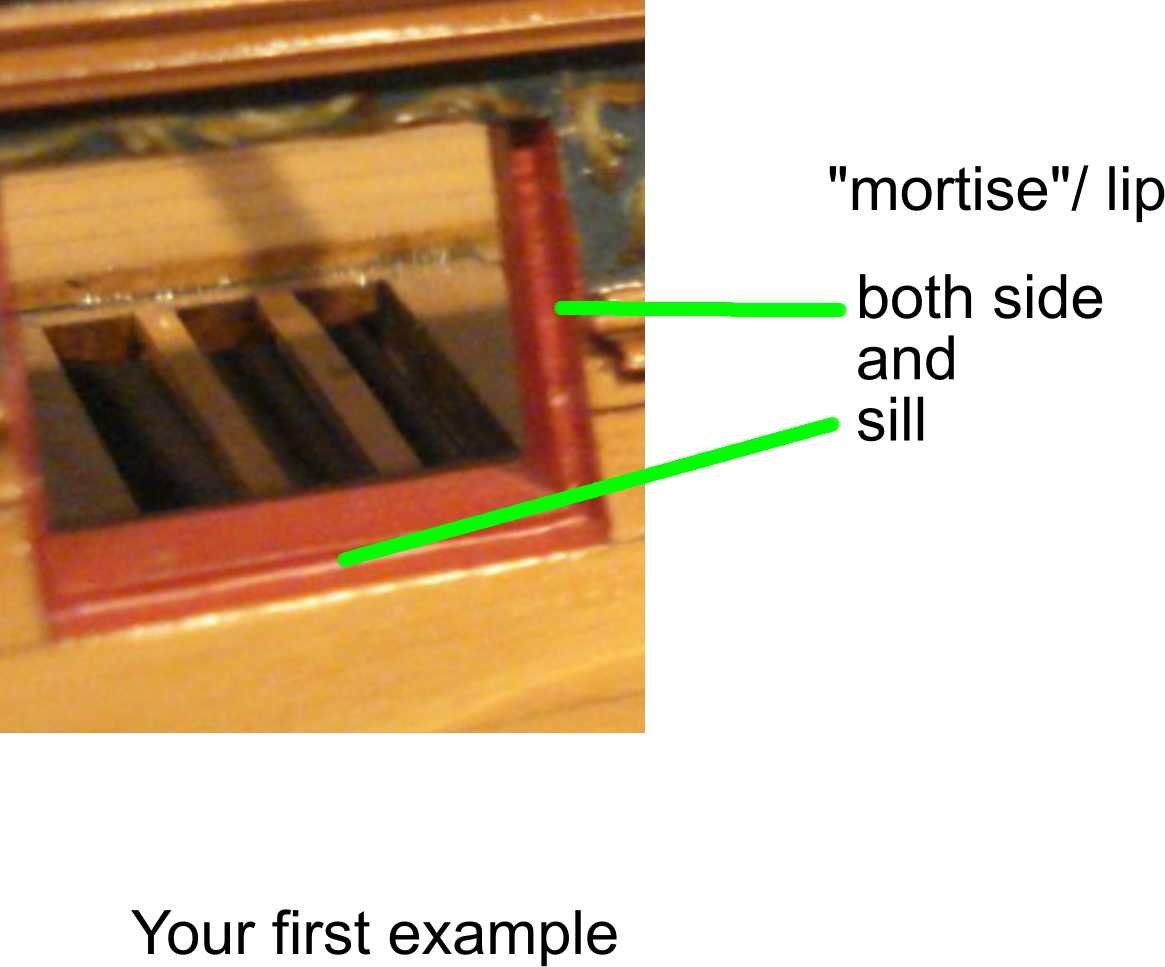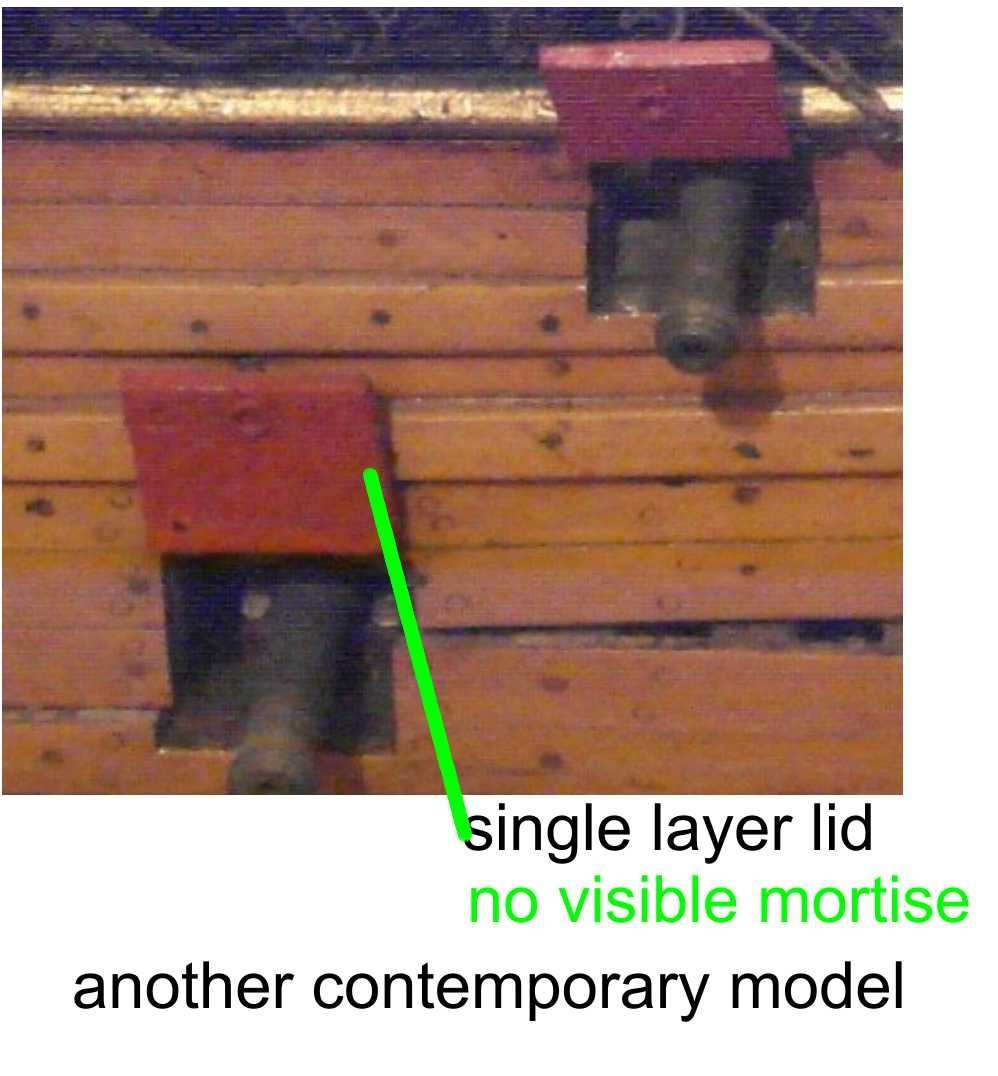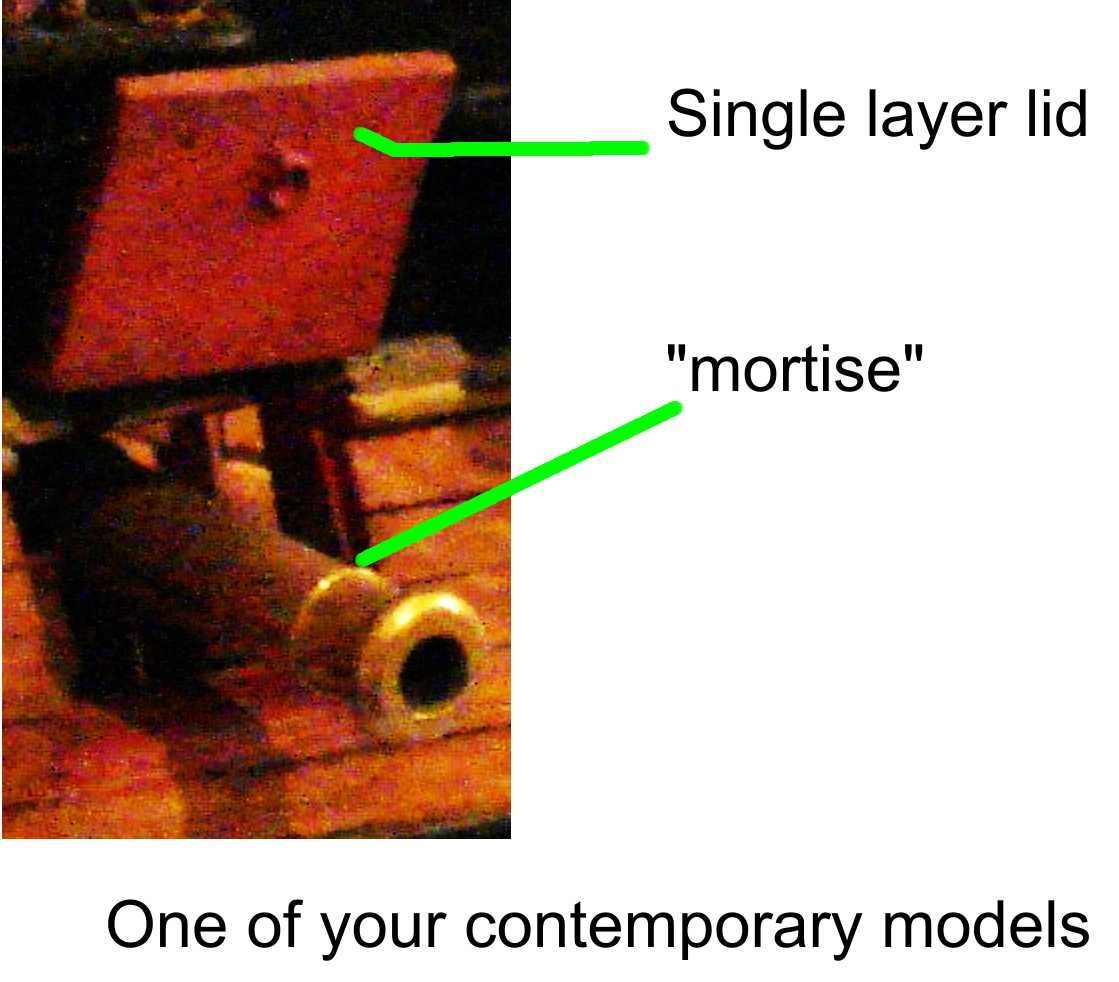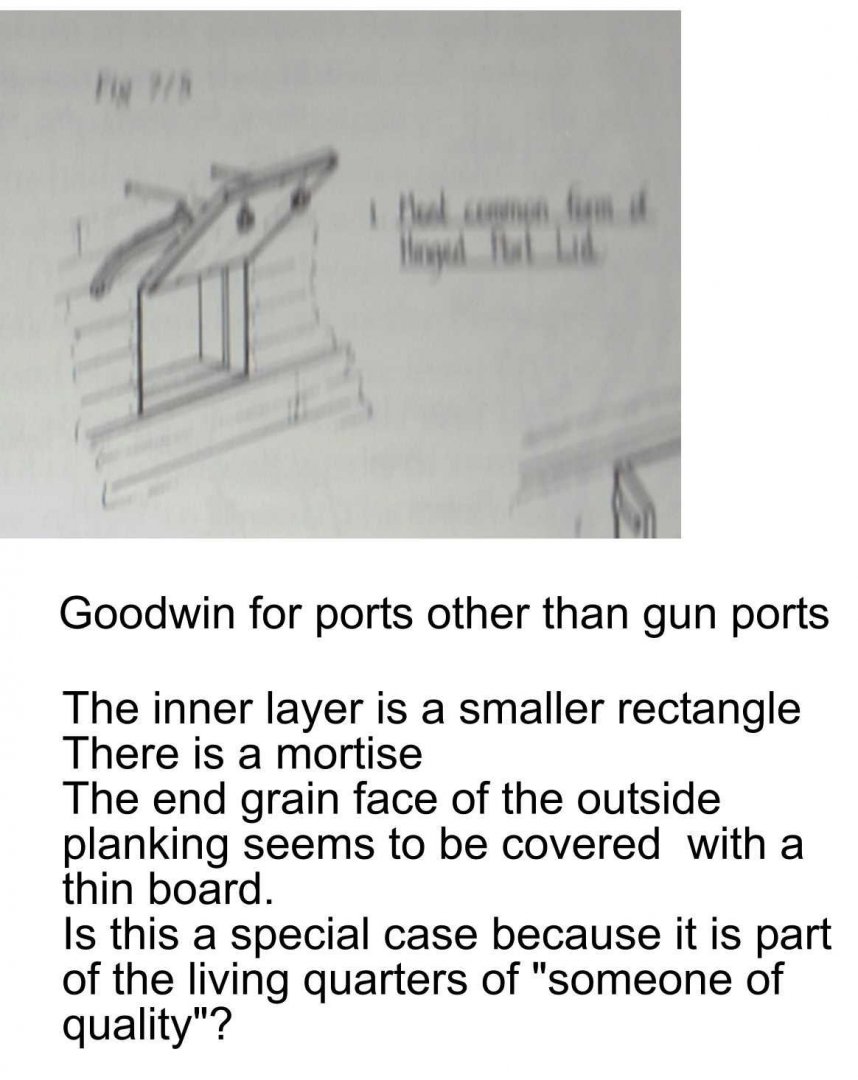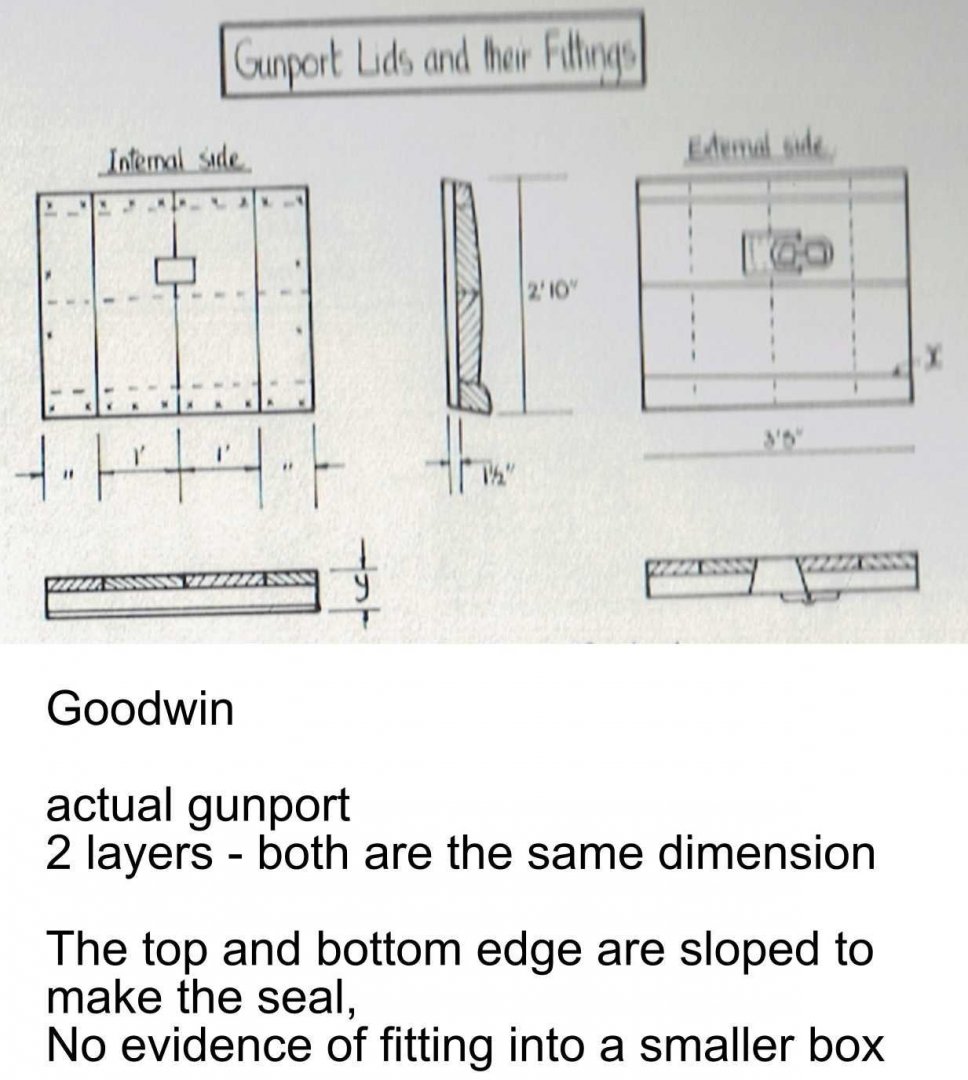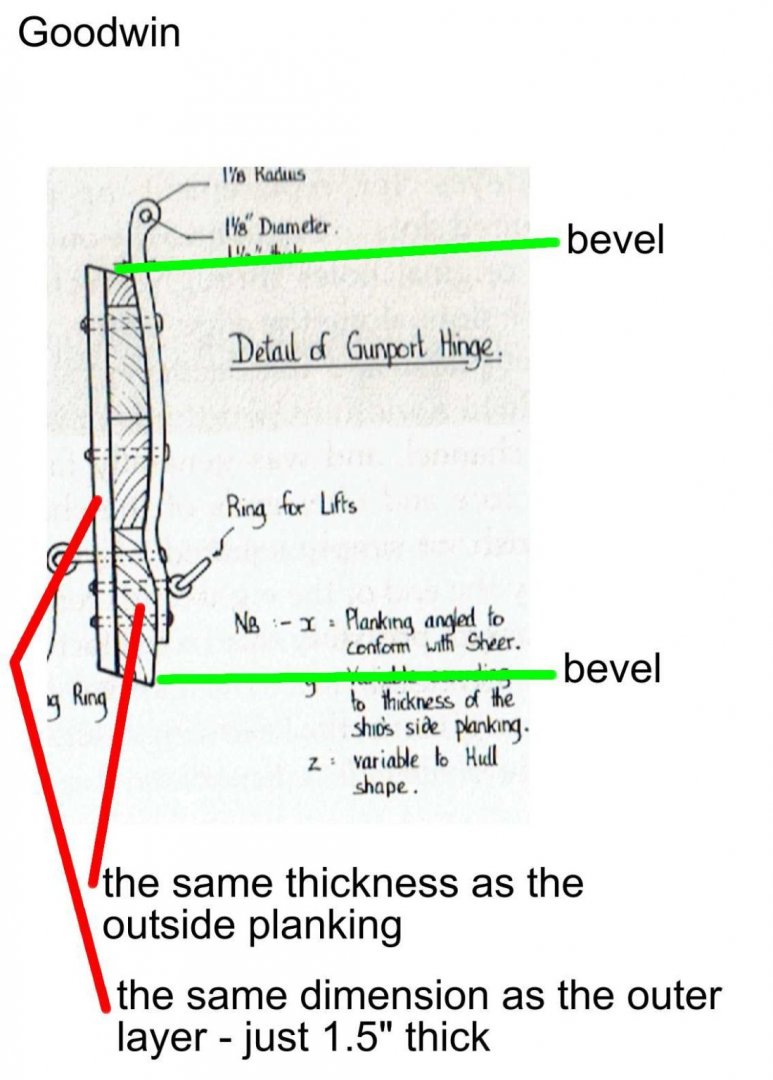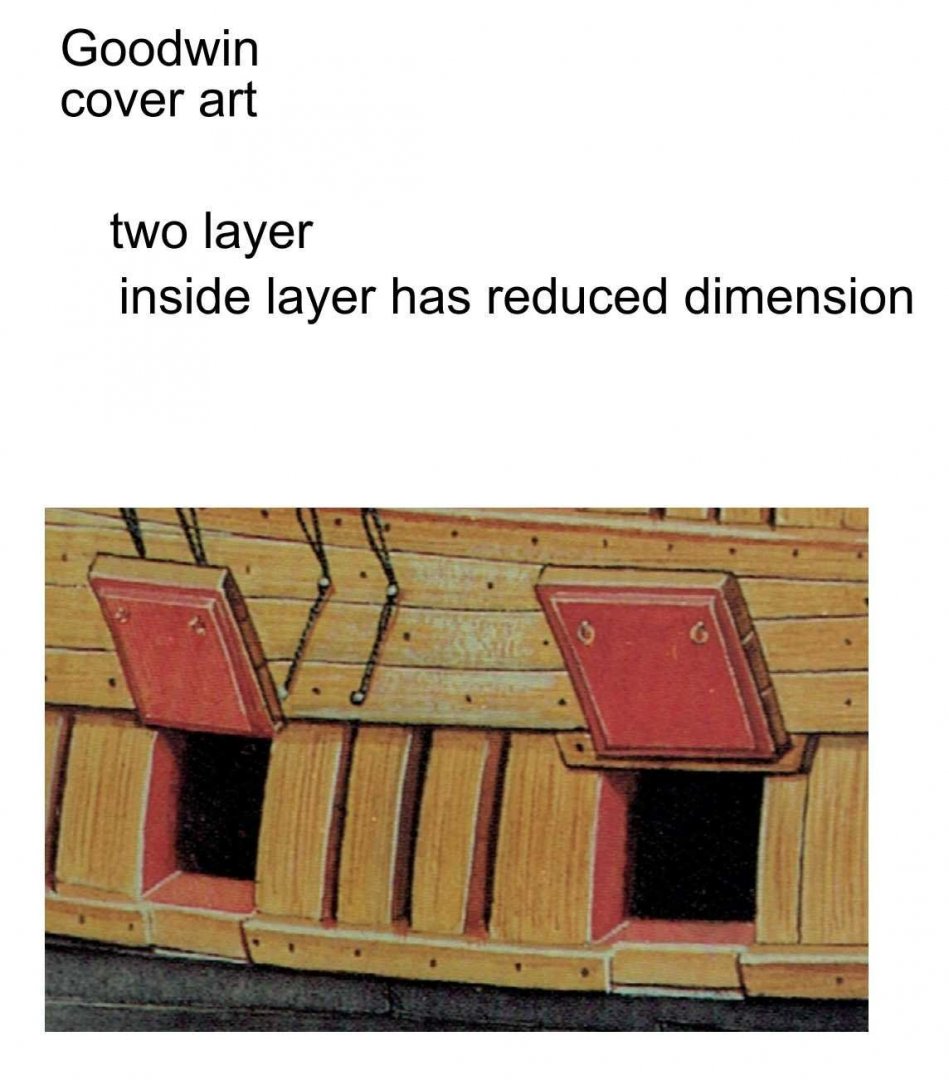-
Posts
3,084 -
Joined
-
Last visited
Content Type
Profiles
Forums
Gallery
Events
Everything posted by Jaager
-
In chasing links for this wood, it reads as though it would be insanely difficult to cut or rip or slice as hard as it is. I suspect doing much of it will effect the cutting edges of the tools used. This is a hidden cost. There is not all that much that is black as far as deck furniture. Topside planking will involve a lot of ripping. Wales, especially top and butt or anchor stock involve a lot of cutting. This hardness may lend it to being worth it for miniature scale models.
-
For surfaces that meet and are PVA bonded, 220 grit is right at the edge of not leaving a surface rough enough for the polymer chains to grip. I am sort of OCD about 220 grit and that fine is pushing it, I think, but my structures hold. From what I read, open coat aluminum oxide is the gold standard for wood.
-
This is something that I did not want to hear when it was first published in the NRJ, but scale has a definite effect on just how much gloss a paint finish should have. Even at 1:24 egg shell or matte would better approximate a full size gloss hull seen from 24 feet away - is what I am thinking. High gloss on a model runs the danger of making it look like a toy.
-
I have been up and around RioGrande https://www.riogrande.com exploring the use of GRS gravers as carving tools and found that they sell a variety of bitts with unique profiles. Their products seem to be excellent quality and the sizes are in our range. If you have not checked them out, it may be worth a visit.
-
Chuck, Thinking about your char problem, I have vague recollection from Chemistry that there is one liquid compound that will dissolve elemental carbon. I did a search to see if I could find out what it was and if it was practical. No joy on the solvent, but I did read that in some situation acetone would displace a carbon deposit and suspend it. I wonder if shaking the charred blocks in acetone would make them a shade or two lighter. Then perhaps expose to Walnut husk dye would give you another color option.
-

Rotary tool recommendations, preferences
Jaager replied to Steve116's topic in Modeling tools and Workshop Equipment
I completely agree and use it for the same jobs that you do. I noticed that it had been dropped by MM, but found it on the Dremel web site after digging. I was checking to make sure that it would be useful to recommend it here when the subject came up. It is a bummer to learn that it has become extinct. -

Rotary tool recommendations, preferences
Jaager replied to Steve116's topic in Modeling tools and Workshop Equipment
One thing about files: a lot of deals and advertising for diamond coated. These are for working metal. The cutting edges do not fit with wood. You want HSS. You want one of the small number of high quality company products. If you are doing heavy wood removal, keep any downward force on top of the area being filed. Working a file with the file force vectors making it bow will not end well for your pocketbook. -
I just remembered = About the veneer. Saw sliced is as good as any other stock. But because sawing also involves significant loss to kerf, the budget version of veneer is blade sliced. There is no loss the kerf, but the wood comes off like pulling on a roll of Bounty. This is unnatural for the wood grain and it always "wants" to return to the curled shape. It will fight with the glue holding it down forever.
-

Making sheaves for blocks and bitt pins
Jaager replied to Kevin Kenny's topic in Masting, rigging and sails
Johnny, There is a reason that 95% ethanol (EtOH) is the strongest that can be easily had. Ethanol forms a non-covalent but very strong bond with water that saturates at 5% water. It takes serious energy to remove the last 5% - one method was boiling in benzene. The ethanol then has to be in a sealed container - like a glass ampule. With any exposure to air - the water vapor in air is "pulled" into the ethanol until it becomes a 95% solution again. It essence, it is impractical to try for anything above 95%. Denatured means that a chemical is added that makes you vomit if you drink it. The federal tax on alcohol is close to $30.00 per gal of 95%. This what "Thunder Road" was all about. Denature it and there is no tax. I have a gallon tin of 99% isopropanol (IsoOH) - My idea there was 1- no water and 2- longer open times. I am not sure that the difference is enough to matter though. I wonder if something else was going on with the Everclear? Methanol - if exposed to the same metabolic pathway as ethanol in the body produces formaldehyde and formic acid. A small amount probably only damages the liver - where it is formed - a larger amount that allows some to get back into the blood stream - brain and optic nerve react poorly to exposure. -
If there is a WoodCraft close to you, they have packages of Hard Maple veneer and Black Cherry veneer. They are sheets, but a knife and straight edge can turn it into strip wood. Maple is close to the color of the species of Pine used urr decking and roofs. AYC is soft - but it holds an edge well and the fibers do not roll. There is no observable grain. Pear and Castelo are very hard and also have no observable grain. Any of the five species will work as frame timbers, deck beams, keels and everything else making up a hull. Three that you ask about are also excellent for decorative carving. Working any of them - the danger is: it will spoil you and you will not be satisfied with any of the cheap crap supplied with most mass market kits. It could also seriously infect you with the scratch build bug.
-

Making sheaves for blocks and bitt pins
Jaager replied to Kevin Kenny's topic in Masting, rigging and sails
Lee Valley has dry shellac flakes. It is packaged in two weights 1/4 lb for $8.50 and 1 lb for $27.00 Three colors light amber - which super blonde or clear ( or about as clear as shellac gets Amber which is regular (I think) and dark amber which I thick is ruby. I have light and dark. The solubility of shellac in EtOH is inversely proportional to the wax content. That is, the darker it is the more soluble it is. I make up a 10% solution = 10 grams in 100 ml of EtOH. that is close to 1 lb cut and for light is close to saturation. Dry flakes do not store for 10 years. The new went into solution quickly, Some old Tiger Super Blonde flakes that I have had for about 10 years only partially dissolved. Take home lesson: if the flakes do not quickly dissolve, buy a new batch. Buying the larger and lower cost per weight quantities is false economy. For our uses the 1/4 lb is enough for the small surface area that we produce. All of the negative factors for shellac as a final finish relate to full size furniture. We are not going to set a wet glass with condensation on a model. We are not going to abrade it in daily use. My HMS Centurion is framed using Hard Maple. The Maple is a bit lighter than I wish. - It is my intent to prime it with 5% super blonde and then use as many coats of Dark as it need to get it looking like the NMM models done using Boxwood. A rag with EtOH is a quick reverse gear if I go too far. -

Making sheaves for blocks and bitt pins
Jaager replied to Kevin Kenny's topic in Masting, rigging and sails
I often use a cotton pad - lots of spent Tee shirts and worn out sheets are around. That is how French Polish was done My aversion to spray anything is that aerosolized anything can be inhaled. Bad luck if it is something that is potentially deadly - even 30 years on. The best protection is to nit get it airborne to begin with. Molecules that are naturally a gas at RT can be a problem, but easy in can be easy out. Something that would never be a gas at RT would condense and require external action to remove it. An example of the damage being disproportionate to the insult was a JAMA or NEJM Q&A: You are on a crowded bus with someone with an active TB infection. How many TB bacilli do you have to inhale to become infected? The answer is = one. -
It is your unrealistic expectation about what instructions can help you with and lead you thru that can leave you as one of the majority who attempt this model ship building- an ash shadow on the field. A plastic kit is the assembly of a model - instructions can lead you thru it. A wooden ship model is something entirely different. It is the assembly of many models. But you must also fabricate each of those models before you.can assemble them. It would require that instructions be complete for fabrication as well as assembly. Tools are needed for the fabrication. Each tool has its own level of required knowledge and practice for you to get it to do the job that you wish. A ship in any culture at any time involves everything that that culture can produce at its most sophisticated level. Thru the 17th and much of the 18th it also involved its level in the visual arts. Every part of a ship is unique in shape. Essentially everything is curved. Each curve is different. The primary material is wood. It too involves a much deeper level of experience with it than any synthetic product. Good plans and instructions should show you WHAT you have to fabricate. It is almost impossible to tell or show you HOW. It just involves too much. It means that if you have to ask, then you do not already have the skills - developed from prior experience - to just jump in the deep end. It is certainly possible to start with a monster like Victory and see it thru to finish. But the learning part makes it go slowly and the rewards and positive feedback is so slow in coming that few have the patience to do it.
-
This is two generations after I started all this and I have no hands on experience with kits in this series, ( I did start with the old Model Shipways kits - yellow box - carved Basswood hulls.) but if you have little or no experience with hardwood woodworking - especially at scale level - (plastic kits as a lead-in probably only helps with painting at scale - and given the kits that you express an interest in - there will be little to no painting with the wood) - you might consider a careful and sure footed entry into all this. https://modelexpo-online.com/Model-Shipways-Lowell-Grand-Banks-Dory-with-Tools-124-Scale-Skill-Level-I-of-the-Shipwright-Learning-Series_p_3959.html A boat is certainly not as sexy as a first rate or a cutter even - but even cutters had boats - understanding boats is a valuable skill/knowledge base and the actual work will give you enough of a taste to know if this is something that you really want to plunge into without investing a house payment. Reading: For Beginners -- A Cautionary Tale would be time well spent.
-

Making sheaves for blocks and bitt pins
Jaager replied to Kevin Kenny's topic in Masting, rigging and sails
This is another armchair experiment (denken experimenten) : In light of the suggestion that the Dremel carbide cutoff disks be strengthened by a coat of low viscosity epoxy, could sheaves be made from paper or cardboard soaked with epoxy? A cork borer! could be used to cut the disk. ! (a metal tube - usually brass -with one end pared to a knife edge) Three layers of paper - the middle having a smaller diameter - makes the groove- It could be made in any color. -

Workshop Vacuum cleaners
Jaager replied to DaveBaxt's topic in Modeling tools and Workshop Equipment
For years, I used a Sears 16 gal wet/dry shopvac that was so loud that hearing protection was needed to avoid hours of ringing ears. Going for the quiet, I bought a Festool Midi - a now discontinued model. One that for some reason did not want a cyclone trap in-line. It was less noisy and pulled enough air volume, but it has one characteristic that makes it useless to me and a wasted $600. It stops after a few minutes. I need an hour or more, not 10 minutes and me having to cycles the on-off. I bought a 14gal Rigid at Home Depot for $100 that is just as quiet, and stays on. It is for my garage. In my model room, I use an Atrix Canister Revo Red Vacuum . It has a clear trap chamber. No silent, but not painful either, -
We have had a recent discussion that essentially pointed out that experience with plastic kits is not much help in prep for tackling a wooden kit. One is pure assembly and the other is fabrication and assembly. Plastic kit instructions are generally complete as far as assembly. In comparison mass market wooden kit instructions are more general and especially for fabrication there is an expectation that outside text and journal articles will be used as supplements. There is often frustration and unrealized expectations. with wooden kit instructions This is why the "start simple" admonition is almost a natural law. For large and complex wooden ship models there is much skill , knowledge and experience that is expected in a modeler who attempts it. That said, the rigging is the same in plastic and wood. Although, the hull is still of some size, 1:150 is a miniature scale. It is difficult to find rigging line that is usable and in harmony with the scale. The Le Superbe that i am familiar with is a Sane designed 74. There were many sisters built in this class. Boudroit started his published inventory with a 4 volume monograph of this class. The masting and rigging are about as well documented as is possible. Scale limitations in available material will make matching the text very difficult. Avoiding being over scale is a real challenge. The spars made from plastic at larger scales are fragile. Having tension taut rigging and not snapping the plastic spars, I suspect is a long shot. The taut lines probably have to come rigid before placement material. Wire is better than fiber at this.
-
This is what I was referring to. Fitted to the outer edge of the wale would work. In a model, it does not matter - as long as the outer edge of the channel is as far out as needed. But should you be attempting to replicate actual practice in your model, reducing the wale thickness would not be done. It was acknowledged to be a potential disaster at worst and bad practice at best, when gunports were cut into a wale. The guns were the reason that a warship even existed, so it was done where necessary anyway. As far as a the bolts being drilled thru the width of a channel, the major force on a channel is in the same plane as the bolts. The bolts were probably stronger than the wood, but the bolts would not be in line with a chain.
-
In light of what the OP wrote about some of his work, I have been holding this back, but I will just type it. The wales and rails were major structural parts of a hull. I can not conceive of a situation where one would be weakened in any way just to attach a channel. A channel is a part of the rigging. It does nothing to strengthen a hull, If anything,a channel adds addition stress to the hull. I would expect that it needed a sound attachment to the side of a ship. An attachment not prone to racking, but it not digging into the hull structure. I see that any decorative molding on a rail or wale would be absent where the channel attached, but that would be about all.
-
This does not seem to be a hostile and defensive situation. There is no obvious owner who is being protective. I think asking for forgiveness for breaching copyright after publishing this, rather than asking permission before hand, is the more efficient and productive course. In the fantasy situation where there is an actual copyright holder for this document, it could smoke them out. This occurring if the probably 130+ year old owner actually cares. This present stance is a pointless gesture to make an absolute statement. It would be a better statement to add a footnote. Just explain that we are willing to remove the document if the author comes forward and requests it.
-
The wise and economical way would be to wait until you get to a point where you need a tool and then buy the one that balances quality with how much you will use it in the future. Better for you would be to see if and how firmly the hook gets set with your interest in this hobby. It has a unique advantage of being bounded enough not to be over whelming but broad enough that you could never cover it all. Starting simple also allows you to explore tools and paint that you would never use again or use if you "knew then, what you know now". This is neigh on to impossible for me, because I have an obsession about being as self sufficient as possible. But then, I do not have to answer to anyone about how much I spend and on what. A tool obsession can get expensive if you let it. I trust that you have looked at : For Beginners - Cautionary Tale.
-
Bill, To add to your stew of options: Using a drill press to drive sanding drums The motor being in your line of sight is the major negative. In a thickness sander function - this is not a problem. When shaping frames with a serious bevel, it can be. If your drill press has a large steel table - a Carter magnetic fence is a quick and dirty but not low cost help to the thicknessing function. Fine tuning the thickness gap will be difficult and tedious though. There are sleeveless sanding drums that let you use off the shelf 9 x 11 sheets. They not only come in standard 3" high with a variety of diameter variety, but there is an additional 3" diameter drum that is 6" high and one that is 4.5" high. The 6" is a big help for shaping frames if you favor the larger scales. (Roger has covered the following - we were typing at the same time - me very slowly) To speculate about your present machine: The original version used a DC motor - the present version switched over to an AC motor. I have no idea about physical size of a DC motor vs an AC motor to get the same power output. I also do not know if AC has any advantage over DC in efficiency, size and maximum possible force. You may wish to determine the force/power difference and not replicate a possible under powered situation.
-
Thanks Allan, Figure 7/5 on page 189 It is probably just the artist did not draw the ends of the outside planking as the planks lay on the face of the frame. I misread the caption. 7/5 are all gunports, and not the alternate under the quarterdeck/poopdeck "windows" that I had imagined.. In any case, the linings on the sides, sill, lintel allow for the use of "veneer" to make them. This is much easier. To be a bit self serving about my choice in framing above the wale: For a model, it sort of makes it an unnecessary effort to shift top timbers so that they precisely frame a port - if complete outside and inside planking will be used. I compound this further by having a solid wall topside. No spaces. It makes an otherwise fragile zone quite strong. An advantage of POF is that the frames make it easy to locate the gunports. The lining means that the rough opening does not need to be "pretty".
-
Allen, I am just too out of practice to draw . I will use JPG and scans to try to show what I am asking about. In doing this, I have found that there is a lot of confusing and ambiguous ....... between the contemporary models that you have provided and within Goodwin itself. My interpretation is that old model makers, who were making models of specific ships ( as opposed to the very rare classroom instruction models ) were just as prone to use shortcuts as we later modelers for the minor parts. This would answer why the single layer lids. Going elaborate for 50-120 lids that few would even notice would extend the building time. I wonder if the two layer tight plug ( plastic foam cooler lid type seal) comes from hulks. Old survivor ships that in the late 19th century and early 20th century had become living quarters and office space could have had the gunports and lids "upgraded" to be more weather tight. Something that a couple of generations later would be mistaken as being how the ships were when in actual service.
About us
Modelshipworld - Advancing Ship Modeling through Research
SSL Secured
Your security is important for us so this Website is SSL-Secured
NRG Mailing Address
Nautical Research Guild
237 South Lincoln Street
Westmont IL, 60559-1917
Model Ship World ® and the MSW logo are Registered Trademarks, and belong to the Nautical Research Guild (United States Patent and Trademark Office: No. 6,929,264 & No. 6,929,274, registered Dec. 20, 2022)
Helpful Links
About the NRG
If you enjoy building ship models that are historically accurate as well as beautiful, then The Nautical Research Guild (NRG) is just right for you.
The Guild is a non-profit educational organization whose mission is to “Advance Ship Modeling Through Research”. We provide support to our members in their efforts to raise the quality of their model ships.
The Nautical Research Guild has published our world-renowned quarterly magazine, The Nautical Research Journal, since 1955. The pages of the Journal are full of articles by accomplished ship modelers who show you how they create those exquisite details on their models, and by maritime historians who show you the correct details to build. The Journal is available in both print and digital editions. Go to the NRG web site (www.thenrg.org) to download a complimentary digital copy of the Journal. The NRG also publishes plan sets, books and compilations of back issues of the Journal and the former Ships in Scale and Model Ship Builder magazines.




